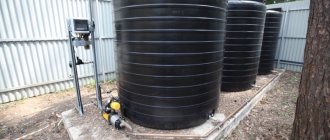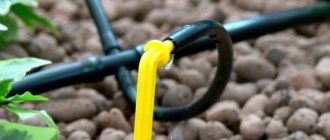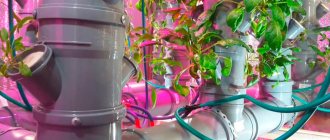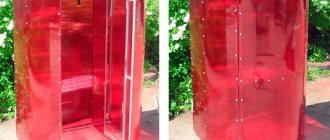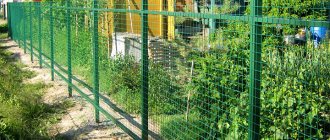Need for watering
When purchasing a lawn, you need to remember that it needs moisture, and surface watering will not be enough. For it to be considered correct and of high quality, it is necessary to ensure that water penetrates into the soil at a distance of at least 5-6 cm, which will help maintain colorful greenery for the lawn.
Not everyone has the opportunity to pay a lot of attention to their lawn. This is where automatic lawn watering comes to the rescue, caring for the lush greenery of the lawn on its own. You only need to carefully configure its automation according to the instructions.
Irrigation Variations
There are fundamentally different designs that are mounted separately in different cases:
- for flower beds and greenhouses;
- lawns;
- entire summer cottages.
An optimally selected irrigation system can increase productivity and reduce water consumption; in addition, it will greatly improve the appearance of plants planted on the site. This largely depends not only on regular, but also on uniform watering of the area.
Automatic watering of an area with trees Source i.pinimg.com
The landscape irrigation system contains the following components:
- hoses;
- taps;
- valves;
- controllers;
- sprinklers.
All this functions thanks to specially configured programs that operate according to their clearly defined schedule.
An automatic watering system is installed before sowing the grass mixture. This is because laying pipes requires removing the top ball of turf. An alternative option is a drip irrigation system. However, it must be taken into account that they are not capable of serving large lawns.
Equipment selection
You need to find and choose the right equipment; as a rule, the size of the equipment varies depending on the size of the site itself.
- plastic pipes;
- connectors;
- sprinklers;
- drip hoses;
- automatic valves;
- pump;
- water tank;
- rain or soil moisture sensors;
- programmable controller.
Types of irrigation systems
Initially, automatic lawn watering is divided into agricultural and landscape.
Installation of equipment for automatic watering Source images.ru.prom.st
Landscape automatic irrigation is used on private lands:
- Automation - the work schedule is entered into the program and watering takes place strictly according to it.
- Manual – turns on manually.
- Combined - work can be programmed or controlled manually.
We present to your attention the main systems. This information will help you choose the best one for your site:
- Drip and micro-drip.
- Soil and root.
- Sprinklers.
- Fog-forming.
Microdrip irrigation at the dacha is an ideal solution on lands with limited water supplies. It is carried out using a structure that directs water to the roots. This allows the soil to be irrigated as much as possible while using minimal water.
Automatic watering of beds at a summer cottage Source prorab.guru
Subsoil and root automatic lawn watering supplies water directly to the roots of plants. A special feature is the location of the system in the ground. This guarantees maximum efficiency of the structure and the fact that it will not be visible from the outside, that is, it will not spoil the appearance of the site.
Sprinklers create the appearance of summer rain. This automatic garden watering system supplies moisture to the roots and humidifies the air around the plants.
The fogging system involves creating the appearance of fog, this ensures watering with the smallest drops. It is considered the best for caring for “tropical guests”.
Instructions for assembling a temporary water supply system
To install a seasonal “temporary structure” you will need a set of pipes and fittings of suitable diameter and a pump for forced water supply. To correctly calculate the amount of consumables, draw up a drawing in the form of a sketch, on which you need to indicate the length of all lines and connection points.
A drip irrigation scheme that provides irrigation for a greenhouse, open ground beds and garden plants. The object for storing water is a storage tank installed on supports, so using a pump is possible, but not necessary
To set up drip irrigation, it is enough to purchase a ready-made kit equipped with instructions.
To assemble according to your own diagram, proceed according to the following plan:
- lay out the pipes according to the drawing, determine the locations of water points;
- if there are enough elements, connect them with fittings;
- attach additional parts (watering nozzles);
- connect the system to a pre-installed pump;
- test the operation of the water supply.
With the pump turned on, check the pressure at all points and the tightness of the communications. To prevent hoses and pipes from getting tangled under your feet, try to think through the layout so that they do not cross areas of active traffic and the road for vehicle traffic.
If you constantly use surface water supply, use various ideas to make it easier to install. For example, when building a garden path, lay transverse pipes with a diameter of 50-100 mm under its base in several places. For the winter they can be closed with plugs, and in the summer they will serve as a kind of tunnels for installing water pipes and hoses.
And in this material you can read more about the choice of flexible hoses for irrigation.
Automatic watering installation
Automatic lawn watering must be installed before you begin planting your lawn. The process is carried out in several stages:
- The top layer of soil is removed (about 40 cm)
- Pipe laying in progress
If the lawn has already been planted, its turf layer must be carefully cut off and, after installing an irrigation system, put in place.
Arrangement of irrigation near an alpine hill Source mirsada.kiev.ua
See also: Catalog of companies that specialize in the installation of engineering systems.
It is recommended to group the growing plants before starting to install the automatic watering system. They are planted in groups, taking into account the amount of moisture they need. The site is zoned and water sprinklers with the power required for a particular site are installed.
When the system is installed in an area where bushes or trees grow, it is recommended to install sprinklers with a counter-irrigation stream.
Sometimes, for quality lawn watering, equipment needs to be additionally equipped. For example, if the groundwater in the region is polluted or its technical characteristics do not allow use without preliminary treatment, additional filters will need to be installed.
Even before the onset of frost, it is imperative to drain the remaining water in the system. This will prevent pipes from bursting when frost sets in.
Pipeline installation
After purchasing the material, you can begin installation of the pipeline. There are two types of pipe laying:
- Ground. In this case, the highway is laid on the surface of the earth. Thanks to this, the automatic watering system at the dacha is in the public domain and when winter comes, it can be easily dismantled and stored in the garage.
- Underground. The pipes are located at a depth of 25-30 centimeters. This method is used for constant watering (in greenhouses or other premises) and is considered safer. Thus, the pipeline system is protected from external damage and temperature changes.
Next, you need to indicate the trench diagram on the plan. There are times when a pit needs to be made through the lawn. To do this, spread out plastic film and place the excavated soil on it. We carefully cut off the soil on three sides with a bayonet shovel, take out the grass cube and place it in one layer on the film. After successful installation, return the soil to its place and fill it with plenty of water. In a couple of days the lawn will be completely restored.
It is best to use polymer pipes for wiring the main line, since they are resistant to temperature changes, water hammer, have low thermal conductivity, do not corrode and are easy to install. As for the main line itself, polyethylene pipes are recommended for its installation. They are quite flexible and also durable. If the pipeline system is underground and the liquid in the pipes is frozen, then due to their elasticity they will not burst.
Advantages and disadvantages
With the exception of the high cost of the automatic irrigation system itself and its installation, it has no disadvantages. The only thing that can be noted is the errors made when setting up the automation. Their presence can make the system “overly autonomous”, that is, it will work according to its own rules.
Properly located automatic watering system Source domik.fakt24.info
As for the advantages of the system, compared to conventional watering cans and garden hoses, regardless of the number of various attachments, they are obvious:
- Minimizing time spent on watering
- High-quality soil moisture
- Adjustable water supply
- Water saving
- Additional water filtration options
- Easy to use
- Functions to set the irrigation schedule and its intensity
- Humidity control capabilities - automatic stops irrigation when it starts to rain
- The site can be left without personal control on dry days
- System durability
Proper functioning is guaranteed; additional work will only be necessary when excavation work is carried out on the site.
In addition, do not forget that if you own a large plot of land, you will have to water it daily, by hand on hot summer days. You are unlikely to like it, and you may simply not have the time.
Automatic watering of a large area Source www.pentair.com
See also: Catalog of popular plots in the Moscow region for the construction of a country house.
The automatic watering system performs the task as efficiently and autonomously as possible, without your participation. The source of water supply can be a home plumbing system or an underground well.
To save on installation of the system, you can try to install it yourself. To do this you will need the following equipment:
- Controller
- Solenoid valve
- Filters
- Pumping station
- Pipes
- Sprinkler with nozzle
Each of these components provides a certain stage of the device’s functioning. The most important thing is the controller.
Automatic irrigation system controller Source st.volga.news
This is a kind of computer of a reduced size; in fact, it is the brain of the entire automatic irrigation system, ensuring all its operation. The controller performs the following functions:
- Manages devices
- The program sets the number of waterings
- Turns off watering when it rains
- The controller can be installed both outside and indoors.
The main function of the solenoid valve is to ensure optimal water supply to pipes and sprinklers.
Filters ensure a long service life of the system and clean the water from blockages that could lead to the need for repair. The pump is used when water is supplied from a well. It creates in the system the pressure that is optimal for full watering of the lawn, activating a mechanism consisting of sprinklers and nozzles.
Automatic garden watering Source www.giardinaggio.it
Organizing automatic watering with your own hands: three simple ways
Automatic watering of a plant collection can be organized independently, in a short time and without significant material costs.
1st method
You will need: several hospital droppers according to the number of plants that need watering, a 5-liter plastic bottle, an elastic band or wire to secure the ends of the tubes.
How to do:
- Remove the needle tips from the droppers.
- Check the droppers for integrity by blowing into them. If the tubes are not damaged, they will be well ventilated on both sides.
- Connect the ends of the tubes together and tie them with an elastic band or wire. This way they will lie calmly at the bottom of the bottle and not float on the surface. Try not to pinch the tubes .
- Place the tied ends of the IV tubes into a bottle of water and place the bottle as high as possible.
- Open the dripper regulator, letting water flow through the tubes, then immediately close it.
- Insert the free ends of the tubes into the pots and use the wheel to adjust the amount of incoming water.
ON VIDEO: In addition to droppers, medical syringes are suitable for creating homemade watering devices. From such a syringe, a plastic bottle and a PVC tube, a drip irrigation device is obtained.
2nd method
You will need: a plastic water bottle. The size depends on the root ball of the plant. For a tub, take several medium-sized bottles, for a compact pot - one small one.
How to do:
- Make small holes in the bottle cap.
- Place the bottle upside down in the container with the plant.
IN THE PHOTO: Automatic watering from a bottle, plastic or glass, is also good for indoor seedlings. Photo by Megan Andersen-Read.
3rd method
You will need: nylon cords or laces, woolen threads, twisted bandages or any materials from which wicks can be made; a basin or bottle filled with water; peg for fixing the wick.
How to do:
- Twist an improvised wick from scrap materials.
- Place one end of the wick into a container of water.
- Secure the other end into the plant container with a stake or other means.
This method of moistening the soil is described in detail in the article on wick watering of indoor plants.
IN THE PHOTO: Wick automatic watering will keep Saintpaulias healthy and fresh. Photo by u/skysong4.
Preparatory stages
To begin installing the irrigation structure, the following preparatory steps are performed:
- Draw up a project
- Calculate the cost
- Install
- Launch
At the design stage, you need to draw up a plan of the entire area where irrigation is planned. The diagram is also called a dendroplane, on which all plants are marked. The area of the site is measured with a tape measure and a plan with paths, buildings and plants is drawn on a piece of paper.
Preliminary plan for an automatic watering system Source www.termoclick.ru

